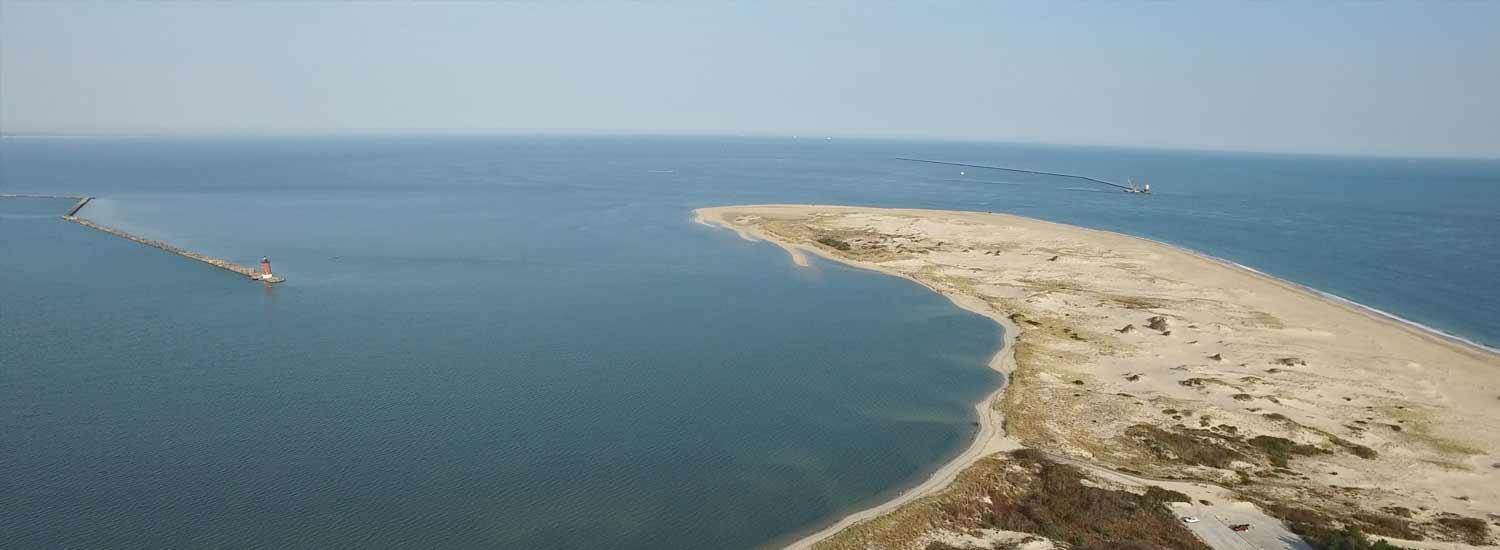

Special Notice:
About the Park
When the current lands of the state of Delaware were granted to William Penn sometime after 1682, Penn proclaimed that Cape Henlopen and its natural resources were to be for the common usage of the citizens of Lewes and Sussex County, thus establishing some of the nation's first "public lands." It has remained in the public domain ever since, playing a major role in local shipping and in the nation's military history. The historic Henlopen Lighthouse no longer helps to guide vessels through the treacherous bay waters, but the two stone "breakwaters" barriers off the point of the Cape, completed in 1869 and 1901, still form a safe harbor for boats during rough seas. As a Delaware state park, Cape Henlopen remains in the public domain.
Water, Beaches, and Trails
Cape Henlopen's beaches attract thousands of visitors who enjoy everything from ocean swimming, boating, fishing, and kayaking to clamming, paddle-boarding and wind-surfing. But Cape Henlopen offers more than just the ocean and bays. The park's premiere trails offer hiking and biking exploration.
A designated swimming beach, accessible from the Lewes entrance to the park, provides lifeguard patrols between Memorial Day weekend and Labor Day (schedule may vary depending on staff availability).
Mobi-Mat equipment, consisting of three 30-foot mats allowing those in wheelchairs and power chairs to access the beach from the boardwalk, is also available at this location.
Camping and Cabins
Cape Henlopen's campground, set among pine-covered dunes, now includes 2-point hookups, 100-amp service on several sites, and sites to accommodate larger rigs. Twenty walk-in tent sites lie adjacent to the Waking Dunes Trail. Twelve camping cabins -- two-room individual cabins that offer an outdoor spigot and fire ring for cooking and share a communal bath house -- offer an economical alternative for vacationing at the beach. Visit our Reservations section for camping information and pricing.
Fort Miles Museum and Historical Area
During World War II, the Delaware River was a chief priority for defense planners because of the access it afforded to the giant trade centers of Wilmington, Philadelphia, and beyond. Fort Miles, located in what is now Cape Henlopen State Park, was a key piece of the nation's coastal defense at that time. Visit the Fort Miles page in our Attractions section for information about programs and tours.
Seaside Nature Center
The centerpiece of the newly-renovated Seaside Nature Center is a 495-gallon two-level touch tank, complete with viewing windows that allow visitors to see stingrays, horseshoe crabs and other species in the tank while they’re underwater. The nature center also features five 1,000-gallon tanks with local fish, exhibits that explain the different habitats within the park, a live Osprey cam (April through August), and a gift shop. A wide selection of activities and programs for children and adults are led by Seaside Nature Center staff each week.
Nature Center Hours
- Mid-June through Labor Day
- Fall and Spring
- November through March
- Closed Monday and Tuesday
9 a.m. to 5 p.m. daily
9 a.m. to 4 p.m. daily
9 a.m. to 4 p.m., Wednesday through Sunday
Borrow-A-Bike Program
Free bikes are available at the Seaside Nature Center on a first-come, first-served basis, weather permitting, for 2 hours at a time, Bikes must remain within the park and stay on the paved bike trail. For more information, call the nature center. The Borrow-A-Bike Program is a project of the Friends of Cape Henlopen.
Borrow-A-Bike Hours
- Bikes available 9 a.m. to 3 p.m. daily on days when the nature center is open, with last rental at 2 p.m.
- Summer only: Available until 4 p.m., with last rental at 3 p.m.
Beach Plum Island Nature Preserve
Lying between the Delaware Bay and the Broadkill River, Beach Plum Island Nature Preserve – Washover Barrier Spit provides the only publicly owned wild beach in Delaware incorporating both dune and marsh habitat. A portion of beachfront allows surf fishing and pedestrian use; however, a majority of the preserve is off limits to human activity to allow for wildlife conservation. The site provides important habitat for horseshoe crab spawning and shorebird feeding in the spring. The preserve has a pedestrian-only linear trail on the river side and a limited-access parking lot.
Upcoming Events
There are currently no programs scheduled at this location
